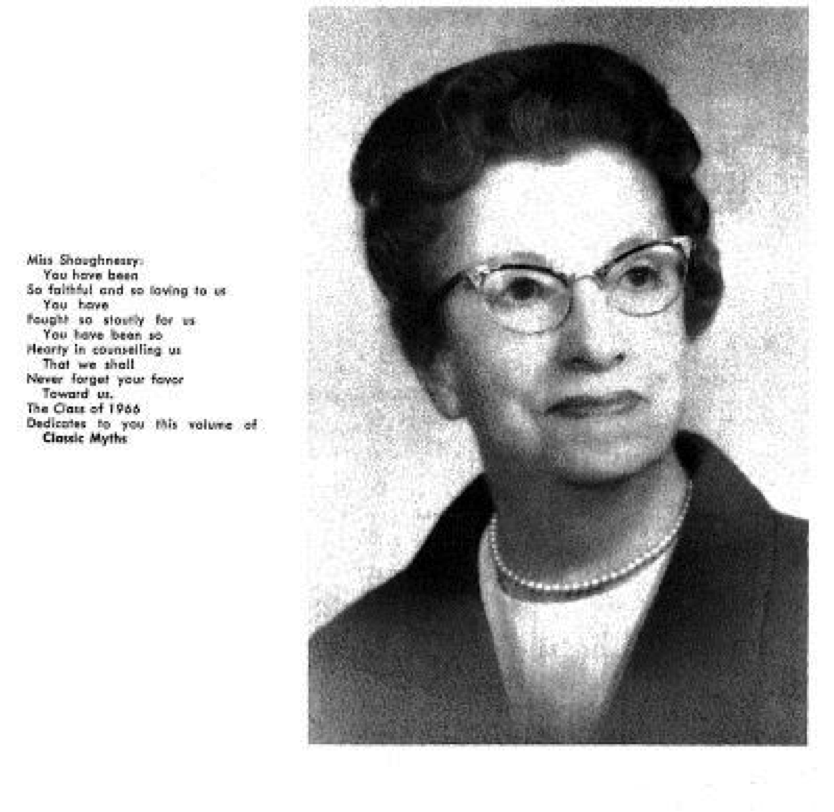By Thomas Matthews
0
0
1
93
531
Boston College
4
1
623
14.0
Normal
0
false
false
false
EN-US
JA
X-NONE
/* Style Definitions */
table.MsoNormalTable
{mso-style-name:”Table Normal”;
mso-tstyle-rowband-size:0;
mso-tstyle-colband-size:0;
mso-style-noshow:yes;
mso-style-priority:99;
mso-style-parent:””;
mso-padding-alt:0in 5.4pt 0in 5.4pt;
mso-para-margin-top:0in;
mso-para-margin-right:0in;
mso-para-margin-bottom:10.0pt;
mso-para-margin-left:0in;
mso-pagination:widow-orphan;
font-size:12.0pt;
font-family:Cambria;
mso-ascii-font-family:Cambria;
mso-ascii-theme-font:minor-latin;
mso-hansi-font-family:Cambria;
mso-hansi-theme-font:minor-latin;
mso-fareast-language:JA;}

Credit: Nick karp
The Hotel Year made its debut in the summer of 2009. The self-proclaimed anti-pop anarcho-punk quartet met in high school and united together as a result of other (band) projects falling through. They put out their first release We Are All Alone independently on blank CDs from Wal-Mart. The CDs featured a red spray painted on logo that was a “T”, “H”, and “Y” morphed together. They gave them out for free at their shows, which were typically at town halls, skateparks, or houses.
A lot has changed since those shows played regularly in high school.
In February of 2013 the band signed to the prominent indie label, Tiny Engines.
Fast-forward to 2015 and The Hotel Year, now The Hotelier, have released two more albums, changed their name, and have accumulated a new audience—the latter thanks to the band’s 2014 release, Home, Like Noplace Is There (HLNPIT). The name change was a result of complaints from people confusing the group with the similarly titled band “My Hotel Year.”

The hotel year summer 2009
While the name change was bound to start some chirping, it was the release of HLNPIT that really got people talking. So much talking that the band has been labeled leader’s of the “emo revival.” This so called revival refers to a resurgence of music influenced by 90’s style emo play. Alternative Press included The Hotelier in their “12 Biggest Moments of the #EmoRevival in 2014″ piece and referring to vocalist Christian Holden’s lyrics, stated, ” ‘I called in sick from your funeral / the sight of your body made me feel uncomfortable’ is already set in stone as one of the best all-time emo lyrics.”
An interesting compliment to say the least.
But The Hotelier wasn’t really worried about revivals or genres when crafting HLNPIT. Holden virtually shrugged his shoulders in a Tumblr post talking about the album and their recent labeling of emo stating, “I guess we’re emo now” with a self-created emoticon shrugging. The focus instead was on the complex topics the album grapples with—loss of identity, mental illness, addiction, and power. Topics less commonly found in a genre dominated by male fronted groups singing bitter songs about getting dumped.
Pitchfork.com streamed the full album online a week before its initial release, giving The Hotelier access to audiences previously not reached. National spotlight was inevitable.
Looking past the album’s national attention, more important, is the album’s ability to examine certain topics/ideas and to present them to people that wouldn’t necessarily think of such topics/ideas in the ways that the album demands. What might appear on the surface to be typical “pop”-punk songs, filled with catchy choruses and hooks, a closer examination reveals much more.
For example, the political implications of mental illness and work are dissected on “Your Deep Rest.” And fans are exposed to this dissection whether or not they recognize it when singing along to lyrics, “A conscious erasure of working class background /Where despair trickles down /Imbalanced chemical crutch/ Open up/ Swallow down.” The album is full of (similar) insights on social structuring and the personal suffering that is a result of such structuring, and they’re all packaged and presented carefully in the form of catchy, punk—or should I say, emo songs?

Home, Like Noplace Is There, Tiny Engines
0
0
1
14
86
Boston College
1
1
99
14.0
Normal
0
false
false
false
EN-US
JA
X-NONE
/* Style Definitions */
table.MsoNormalTable
{mso-style-name:”Table Normal”;
mso-tstyle-rowband-size:0;
mso-tstyle-colband-size:0;
mso-style-noshow:yes;
mso-style-priority:99;
mso-style-parent:””;
mso-padding-alt:0in 5.4pt 0in 5.4pt;
mso-para-margin-top:0in;
mso-para-margin-right:0in;
mso-para-margin-bottom:10.0pt;
mso-para-margin-left:0in;
mso-pagination:widow-orphan;
font-size:12.0pt;
font-family:Cambria;
mso-ascii-font-family:Cambria;
mso-ascii-theme-font:minor-latin;
mso-hansi-font-family:Cambria;
mso-hansi-theme-font:minor-latin;
mso-fareast-language:JA;}
It only took a few months for HLNPIT to be out before The Hotelier would begin to start playing sold out shows.
0
0
1
63
361
Boston College
3
1
423
14.0
Normal
0
false
false
false
EN-US
JA
X-NONE
/* Style Definitions */
table.MsoNormalTable
{mso-style-name:”Table Normal”;
mso-tstyle-rowband-size:0;
mso-tstyle-colband-size:0;
mso-style-noshow:yes;
mso-style-priority:99;
mso-style-parent:””;
mso-padding-alt:0in 5.4pt 0in 5.4pt;
mso-para-margin-top:0in;
mso-para-margin-right:0in;
mso-para-margin-bottom:10.0pt;
mso-para-margin-left:0in;
mso-pagination:widow-orphan;
font-size:12.0pt;
font-family:Cambria;
mso-ascii-font-family:Cambria;
mso-ascii-theme-font:minor-latin;
mso-hansi-font-family:Cambria;
mso-hansi-theme-font:minor-latin;
mso-fareast-language:JA;}
They have toured relentlessly in support of HLNPIT and sell out popular venues such as New York City’s Webster Hall and Philadelphia’s Union Transfer—venues with capacities of 1,500 and 1,000. And with a few full U.S. tours under their belt, are now ready to hit Europe this spring for tour with Emperor X.

It Never Goes Out album release show 2011
I caught up with The Hotelier’s Christian Holden to talk about how the band’s been handling this welcomed, but humbly unexpected growth.
0
0
1
359
2050
Boston College
17
4
2405
14.0
Normal
0
false
false
false
EN-US
JA
X-NONE
/* Style Definitions */
table.MsoNormalTable
{mso-style-name:”Table Normal”;
mso-tstyle-rowband-size:0;
mso-tstyle-colband-size:0;
mso-style-noshow:yes;
mso-style-priority:99;
mso-style-parent:””;
mso-padding-alt:0in 5.4pt 0in 5.4pt;
mso-para-margin-top:0in;
mso-para-margin-right:0in;
mso-para-margin-bottom:10.0pt;
mso-para-margin-left:0in;
mso-pagination:widow-orphan;
font-size:12.0pt;
font-family:Cambria;
mso-ascii-font-family:Cambria;
mso-ascii-theme-font:minor-latin;
mso-hansi-font-family:Cambria;
mso-hansi-theme-font:minor-latin;
mso-fareast-language:JA;}
– How’s tour with La Dispute and Title Fight going?
CH: It’s kind of wild as far as playing in front of that many peeps, first time in a while I’ve been anxious playing in front of other people. Everyone’s nice though. And some nights the shows have people who just bring us soda whenever we want.
– I remember seeing everyone in the band play in other local Worcester bands before The Hotelier. Sam in Second Half Of The Season, Chris in Point Of View, you in Oregon Trail, and Ben in Modern Guilt. All of these bands were drastically different style wise. Can you talk about how The Hotelier came about?
CH: Yeah we all played in different bands when we were in high school. Sam and Chris played in heavier/grindier/screamy bands and Zack (former member) and I played in pop bands. The Hotel Year started because I had a bunch of pop songs left over that I wanted to do. Then everyday after school, since we all went to high school together, we’d all just go to Sam’s and play together. Ben joined this year but has always sort of played more progressive stuff. However, we are learning that him living in Tennessee for however long he did made him good at playing sad country stuff which is perfect.
– I remember (when I was fifteen years old) going to see you guys play shows at a church and other similar, small places around the Worcester area. Now, (six years later) if I can afford it, I have to pre-order a ticket at least a month or two in advance. Can you talk to me about how the band has handled this transition?
CH: Basically, we’ve been pretty blessed with a couple things starting out: local bands who we thought were great and really didn’t do anything, friends bands who were friendly and experienced, and a really solid local infrastructure when we started. We never had a situation where we saw a band that we knew who “blew up” and thought “daaaaaamn I wanna do that!” We just sort of had these bands who were really good and that was good enough for them. We had sort of low expectations for what our band was going to do and only raised them when they seemed realistic. So, what I’m saying is, we always had fun being in this band. Every time there is some sort of transition like playing to a group of people I can call out by name, and then to a more intimate larger group, and then to over a thousand people I’ve never met, and everything in between…every time a transition like that happens we readjust and make it fun/work/something we want to do.
0
0
1
665
3797
Boston College
31
8
4454
14.0
Normal
0
false
false
false
EN-US
JA
X-NONE
/* Style Definitions */
table.MsoNormalTable
{mso-style-name:”Table Normal”;
mso-tstyle-rowband-size:0;
mso-tstyle-colband-size:0;
mso-style-noshow:yes;
mso-style-priority:99;
mso-style-parent:””;
mso-padding-alt:0in 5.4pt 0in 5.4pt;
mso-para-margin-top:0in;
mso-para-margin-right:0in;
mso-para-margin-bottom:10.0pt;
mso-para-margin-left:0in;
mso-pagination:widow-orphan;
font-size:12.0pt;
font-family:Cambria;
mso-ascii-font-family:Cambria;
mso-ascii-theme-font:minor-latin;
mso-hansi-font-family:Cambria;
mso-hansi-theme-font:minor-latin;
mso-fareast-language:JA;}
– Who were the bands/people that got you involved in the punk scene?
CH: Probably Chris from our band the most. He knew everyone when we were in high school. Bands I really liked were like Last Lights/Morris/Apparitions. Those kid’s bands have always been great. Peeps that kind of “showed us the ropes” and by that I mean peeps that were influential to how we think about our band were Scott Ayotte/Greg McKillop/Anthony Richards.
– In previous interviews when asked about next steps for the band you said, “not as sad,” can you explain this?
CH: Well, when we write, we write albums. As in like, the album is the piece. And this next “piece” we are working on is brighter/warmer and more like 5am on your porch as opposed to 3am in your bed.
– Your writing is very poetic. If you look online the structuring of line breaks and formatting of the lyrics for HLNPIT appears poetic, is this intentional? Do you write poetry?
CH: I don’t know, dude (hippie voice). I just kind of write stuff. I usually can’t write without cadence and melody so songs are mostly where I do my writing. I write short stuff sometimes.
– Any plans for “further down the road” after The Hotelier?
CH: I can’t really speak for everyone as far as their life goals. So I’ll just say music stuff. But, Sam has said this’d probably be the only band he’d be this active with. Ben has expressed dreams of being on retainer as a guitarist for some huge pop star. Ben loves playing guitar. Chris makes kind of really sick hip-hop beats. I imagine he is going more toward that producer route. I have kind of had this philosophical disenchantment with pop music and song structure so I’d probably do something not like this but kind of like this.
– Who has offered you invaluable advice in regards to being a musician and what was it?
CH: I feel like Scott (mentioned above) kind of instilled in us this sort of “no one is going to want to help your band without getting something out of you” thing back in the day. We had grand dreams of releasing our own records and that always being enough. That wasn’t true, but I feel like the loyalty we had to our friends bands and our own work has really kind of shaped how confident and self-reliant we are as a band now.
– A few months back you posted an update on Tumblr talking about 2014 and its happenings. It was a deep reflection— you stated you no longer wanted to play as a band in Worcester anymore. Can you talk about how you came to this decision?
CH: It’s not really a decision. We probably won’t stand by it. I was just moody. I was just worked up about how this one kid was treating me. He kept touching me as if he was gaining something from it because he was weirdly idolizing me. I don’t like that ever, and I just especially didn’t like it in that space. And I like, wanted to talk about how important those spaces are to me and how weird our band has become to a certain extent. Yeah, I don’t know. It’s just like when people really like your music, and some people do really like our music, it just sort of junks up my head. People thinking they know me. People treating me like I’m an object or experience. I just like Worcester DIY (Do It Yourself) spaces because no one gives two hoots about it. It makes everything feel more real.
– What happened to your lawyer Jack?
CH: We used to have a fake manager “Jack E Dhuppe: Attorney of Law” who answered all our emails. We have since fired him because people stopped thinking it was funny.
Note: This interview was conducted prior to the band’s spring tour with Emperor X and has since been published after noted tour.
Below, watch The Hotelier play the first track off of Home, Like Noplace Is There, “An Introduction To The Album,” at Groezrock—an annual music festival held in Meerhout, Belgium.
[youtube=://www.youtube.com/watch?v=FjWUQZTl9yM&w=854&h=480]
Listen to Home, Like Noplace Is There in full below and order it from Tiny Engines here.
[soundcloud url=”https://api.soundcloud.com/playlists/17043416″ params=”visual=true&show_artwork=true&callback=YUI.Env.JSONP.yui_3_17_2_1_1432686249254_12004&wmode=opaque” width=”100%” height=”450″ iframe=”true” /]
Upcoming tour dates:
Contributing Editor, Thomas Matthews, is a Senior at Clark University where he majors in English, specializing in Creative Writing and Journalism.
Follow @writtenbytom !function(d,s,id){var js,fjs=d.getElementsByTagName(s)[0],p=/^http:/.test(d.location)?’http’:’https’;if(!d.getElementById(id)){js=d.createElement(s);js.id=id;js.src=p+’://platform.twitter.com/widgets.js’;fjs.parentNode.insertBefore(js,fjs);}}(document, ‘script’, ‘twitter-wjs’);
































